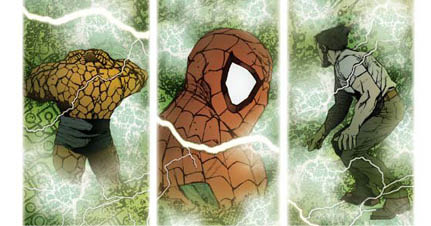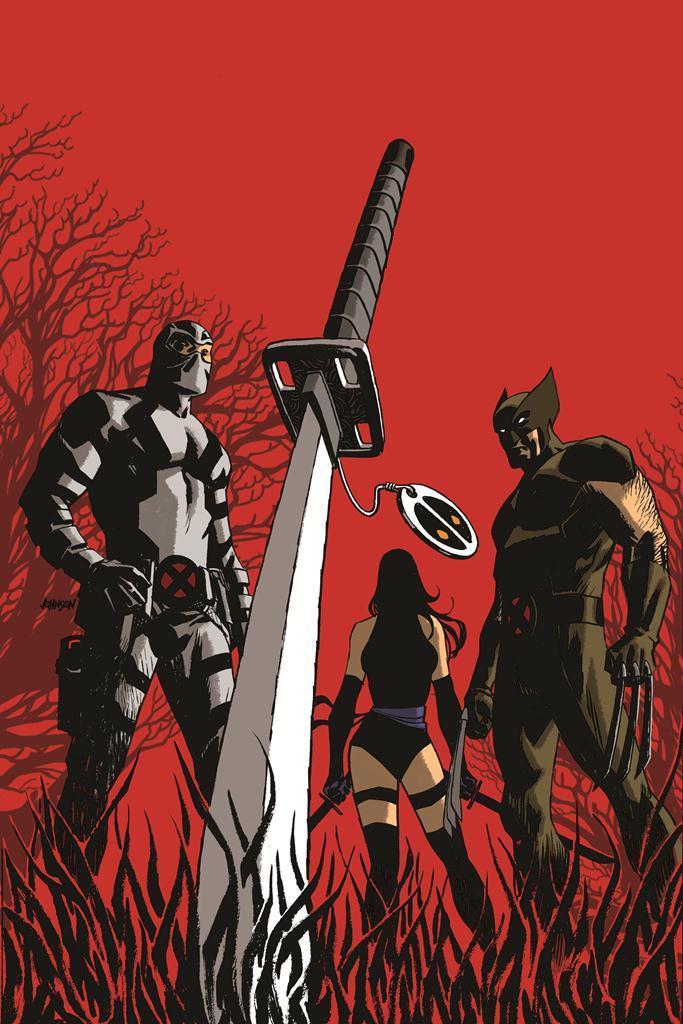Behind the Scenes of Marvel: Anatomy of a Comic Book

(Courtesy of Marvel)
February 16, 2012
Comics allow readers to hold an imaginary world in the palm of their hands. In a mere 20 pages, we bear witness to new galaxies—some with their own laws of gravity, some with alien species that may be benevolent or malevolent to humankind and some with creatures of meta-human powers and abilities that defy the laws of science.

But the astounding universe of comics would not be possible without the dedication of editors, artists and writers. Jordan D. White, editor for the X-Office of Marvel Entertainment, explained how a comic is made. While White assists on “X-Men” comics, his primary job revolves around the “Deadpool” comic series, which involves a meta-human dubbed “a merc with a mouth.” White explained the steps in creating a comic book which, while complex, are ultimately a rewarding process.
![]()
A writer first pitches their story idea to the editor in casting. Writers email or call White about their potential story idea, explaining the concept in a few sentences. When a writer tells an editor their idea, this is known as a pitch. For example a pitch could be, “The heroes of Earth once stood united, but a civil war now dawns upon them. Captain America against Ironman, whose side do you choose?” White uses his judgment to discern if the story idea fits the Marvel Universe.
Once a story idea is accepted, the editor and the writer will work on an outline, which is eventually developed into a master script. A master script contains the characters, lines, actions, sound effects, captions and the overall concept for each page.
![]() The master script is then sent to a penciler who will make sketches that properly portray the scenes within the master script. It is the penciler’s job to transform words into elaborate, eye-catching sketches.
The master script is then sent to a penciler who will make sketches that properly portray the scenes within the master script. It is the penciler’s job to transform words into elaborate, eye-catching sketches.
![]() These sketches are sent to the inkers for inking. Inkers further develop the penciler’s sketches into black and white renderings of the final artwork. Inkers do not color in the artwork—that task is left to the colorist.
These sketches are sent to the inkers for inking. Inkers further develop the penciler’s sketches into black and white renderings of the final artwork. Inkers do not color in the artwork—that task is left to the colorist.
![]() A digital copy of the master script and the inked drawings is made and both are sent to the letterer and the colorist. The letterer will insert the script into the proper place of the drawings. The colorist will color in the drawings. After that, these works are composited together for final production. This all takes about two months.
A digital copy of the master script and the inked drawings is made and both are sent to the letterer and the colorist. The letterer will insert the script into the proper place of the drawings. The colorist will color in the drawings. After that, these works are composited together for final production. This all takes about two months.
![]() After an editor thoroughly reviews the final product, it is sent to print for publication. In a rough estimation, given by White, a single issue takes about three months to complete. However, as White said, “It takes about three months for one issue, but we’re working on roughly 40 other issues, each with different stories and characters.”
After an editor thoroughly reviews the final product, it is sent to print for publication. In a rough estimation, given by White, a single issue takes about three months to complete. However, as White said, “It takes about three months for one issue, but we’re working on roughly 40 other issues, each with different stories and characters.”
A recap, a page that comes at the beginning of a comic to tell readers what happened in previous issues, is not simply a summary of prior issues. Instead, a recap tells the important points of the comic series so new readers are up to date on what is going on. It allows a reader to pick up any issue, say issue #17 “Dark Wolverine: Daken,” and be able to read it with a clear understanding of what has come before.
Recaps invite new readers to pick up any comic. For instance, “General Thaddeus ‘Thunderbolt’ Ross” was determined to rid the world of the Hulk at any cost. His relentless drive to do so ultimately led him to become what he hated most… a hulk.” In two short sentences, about a dozen issues of the “Red Hulk” were summarized.
A cover is the first piece of artwork any reader will see. A single issue may have different covers, called variants. All variants approved by the editor, are published. Variants offer different covers to the same issue and allow collectors to have a complete set of a particular edition.
The long process required in making a single issue may sound tedious, but there are several fun aspects to comic making. White points out that the story, the artwork and the final production are the best aspects to comic making. “A good story is always fun to work on. A good story is never boring,” White said.









